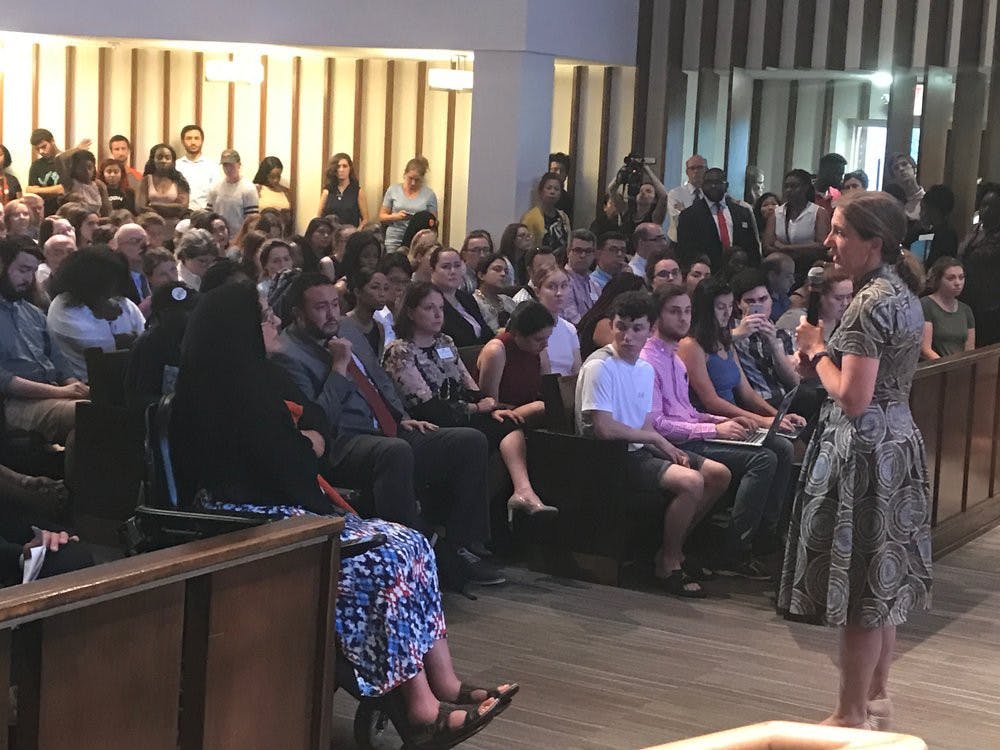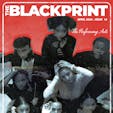BY: NEAH GRAY
Being a student of color at a predominantly white institution isn't always easy. Many students find themselves constantly explaining or defending their race, while also combating stereotypes and incidents of hate throughout the school year.
Since fall 2016, American University has been the target of bias-related attacks during each academic semester. In September 2016, two black female students found bananas left in front of their dorm rooms; one had a banana thrown at her.
In May, after Taylor Dumpson was sworn in as AU's first black female student government president, students found bananas hanging from nooses around campus. These bananas also had "FREE AKA" written on them, targeting Dumpson's historically black sorority of Alpha Kappa Alpha Sorority, Inc. Most recently, confederate flags were posted around campus with pieces of cotton stuck onto them.

Photo by Joe Palekas
When it came to these racially charged incidents, leaders of multicultural organizations and the student body as a whole looked to university administration for a response.
On Oct. 1, 2016, American University began a program called Target of Opportunity, which aimed to recruit more diverse faculty. On May 10, 2017, shortly after the noose incident, AU appointed Ibram X. Kendi as its founding director of the Anti-Racist Research and Policy Center. The university has also held a series of events that include discussions like "AU-Ed Talks: Reframing Racism", "Exploring disAbility: Access, Identity and Inclusion, and most recently "Accidental Courtesy", which tells the story of how one black man helped Klu Klux Klan members understand racism and give up their robes.
Even after AU's response to these issues and a series of steps to make the campus more diverse, many students of color still say they do not feel safe.
Murugi Thande graduated from AU in spring 2016, just after the nooses were hung.
"[It] was very disappointing to leave the school on that note, with just one of the most racist acts that I've seen in my four years at AU," Thande told The Washington Post. "And just to know that it's still going on made it hard to sleep last night."
"This year we are still just as angry, even more angry, just as tired," said the former president of AU's chapter of the NAACP Sydney Jones. "Most people in power here at AU are getting involved to advance their political and private agenda and not really to advance the well-being of the masses. At the end of the day AU, like every other institution, is a business. If you think about it, advocates get paid little to nothing and are doing a lot more work than people in office."
When it comes to racial incidents, it is students of color who need a voice, protection and an institution that stands behind them.

American University President Sylvia Mathews Burwell addresses the community after confederate flags were hung on campus in September.
Photo by Lauren Lumpkin
Amanda Nyang'oro, a sophomore at AU and international student from Arusha, Tanzania said "being at American University with all these racial incidents, it's just very frustrating and annoying… [In Tanzania] I went to an international school with people of different cultures... I was used to going to a class where you had people of all different races, all different cultures and you just adapt. It just doesn't make sense to me how you would have a certain demographic in your community and not do things that at least accommodate them." Nyang'oro is web manager for The Blackprint.
She also expressed that she had a few concerns about the school's responses to these situations. "Physical spaces are a good start, transparency about actions that occur after a racial incident is better," Nyang'oro said. "What happened to those that were caught? Were they actually caught? What actions are being taken so that incidents like these don't happen again? [AU's administration is] getting better at responding to these incidents faster, but they're clearly not changing much to prevent them if they were able to occur twice in the same year. They're better at damage control than prevention at this point."
American University's President's Council on Diversity and Inclusion (PCDI) has been hosting a series of talks since last year called "PCDI Listens." Members of the council set up shop in residence halls to listen to feedback, criticism and to understand the student experience.
PCDI Co-Chair and a professor of theatre in the performing arts Caleen Sinnette Jennings struggles to find a simple solution to AU's diversity and inclusion problem "There is no prevention, it is not going to go away," Jennings said. However, Professor Jennings mentioned initiatives that may help, including a stronger Public Safety presence on campus, changes made to PCDI's website that make it easier for students to stay informed, and intensive training in AU's core values offered to faculty and staff. Jennings said discussions like the ones the Council hosts are giving students "a voice and allowing them to be heard."
Despite these updates, it is clear there is still miscommunication between students and administrators. It seems that progress is being made, but the university has failed to communicate this progress clearly to students. Discussions with PCDI help students give feedback, as well as understand what the Council is doing. However, students need more than that to feel safe. Although American can't promise that another racially charged incident won't happen, it can guarantee steps for prevention.
Feature photo by Lauren Lumpkin


